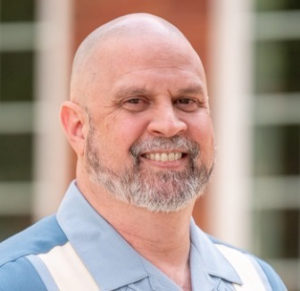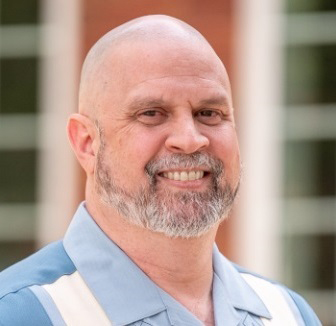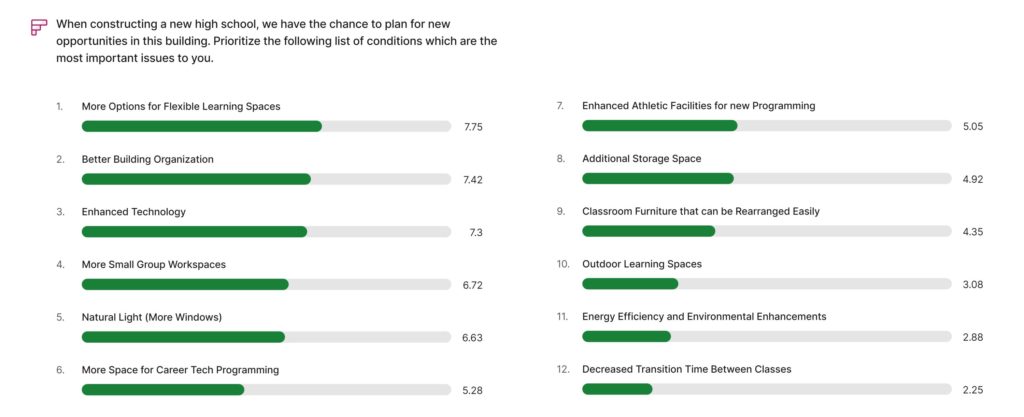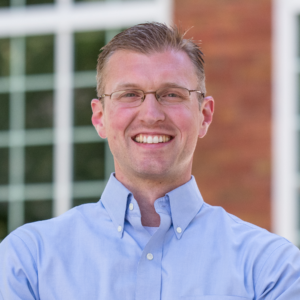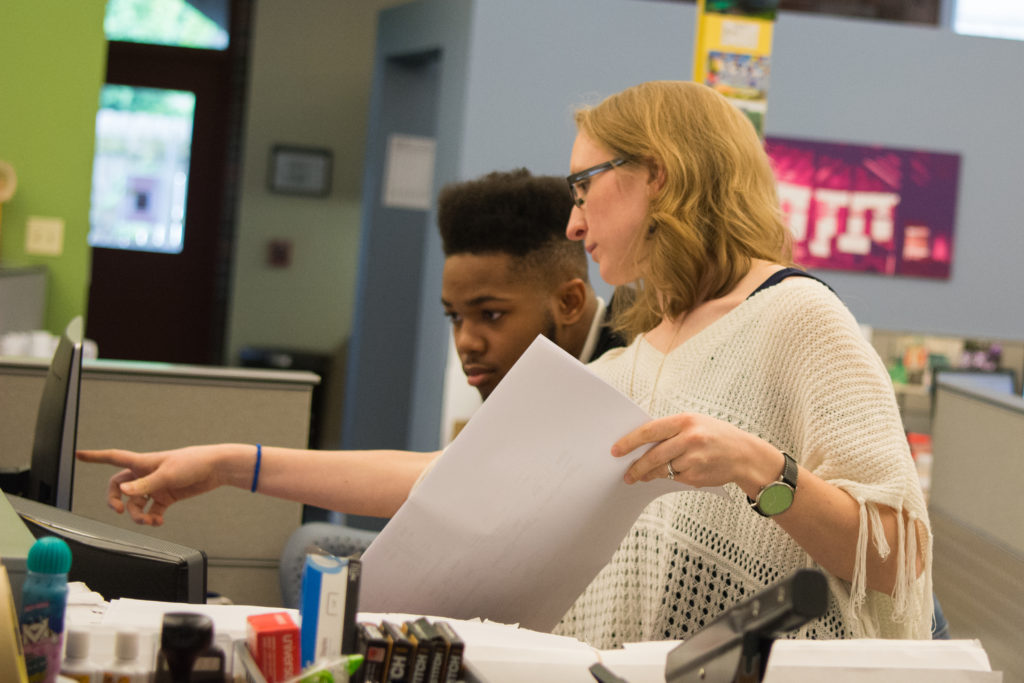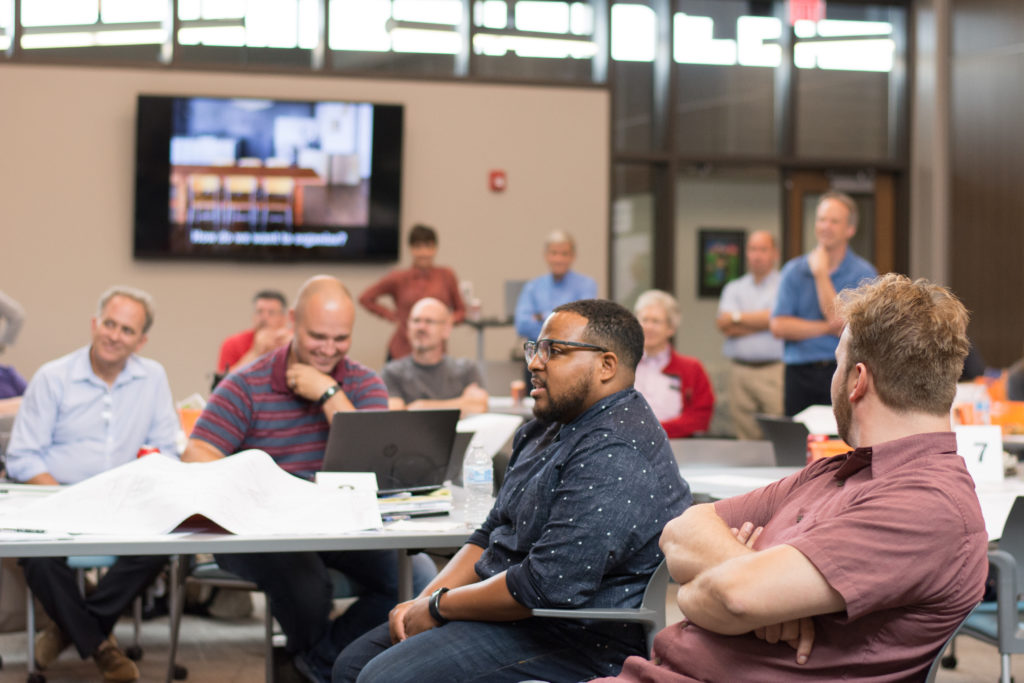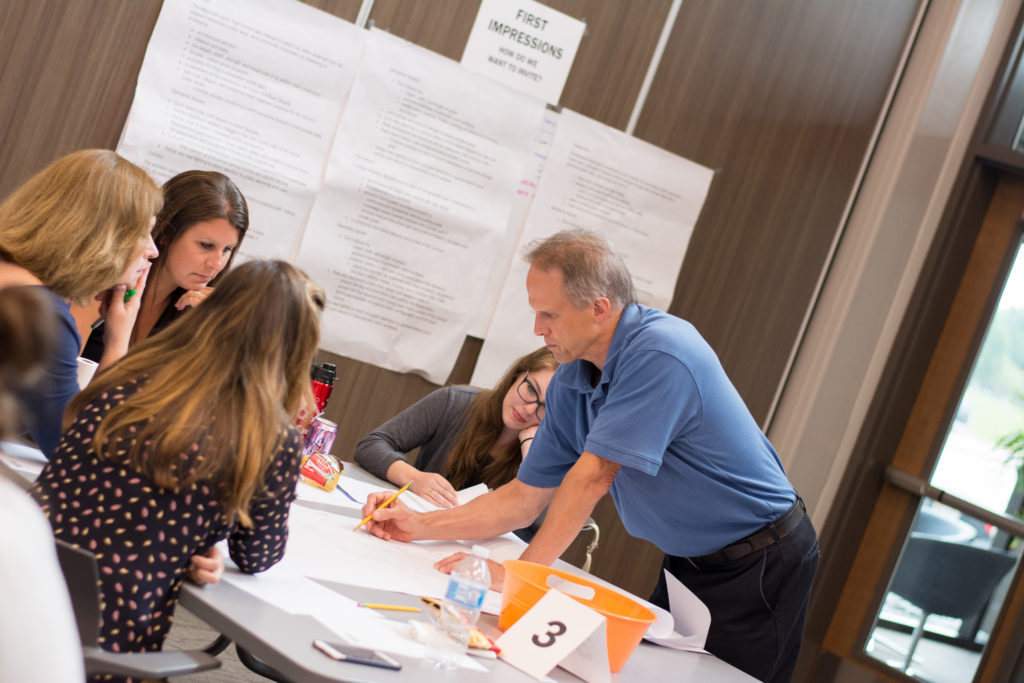Katherine Mitchell — Registered Architect and LEED Coordinator
Katherine Mitchell is a Registered Architect and LEED Coordinator at ThenDesign Architecture (TDA) who places great importance on creating healthy, environmentally friendly spaces for students and educators to flourish in. A safe and pleasing space fosters educational interest and creativity. Katherine is passionate about the community-oriented nature of educational design.
Questions for Katherine Mitchell
What sparked your passion for architecture?
When I was a kid, my dad was an electrical engineer. He would spread out all of his drawings in the family room, and I was fascinated by the idea that a huge 3D building could be whittled down into a 2D drawing. Later on, I helped my dad and uncles with small construction projects around the house and found them to be a lot of fun. In high school, I took an architectural engineering drawing class where I honed in on more architectural design rather than engineering.
What is your favorite element of the educational design process?
I find construction documents really interesting. That’s the part of the process where you bring together all the creative concepts you’ve been developing, and now you are figuring out how to actually build it. You’re excited, and the clients are excited. Now, you’re figuring out all the real-world details so that it can be physically developed. Something goes from being an idea on paper and a computer screen to being built on a site. That whole idea is pretty intriguing.
I also love when the community finally gets to see their finished school. There is a lot of excitement about a new building that will make the students and teachers happier and more productive. It is very rewarding to see them using a space that you helped create.
What is one thing you would like to share with those unfamiliar with architecture?
Architecture is about collaboration. People come together to build things for people. Nobody can do it all by themselves, and I encourage everyone to ask questions. So many talented individuals with differing skill sets and disciplines work together to create something complex. Designers, drafters, engineers, construction managers, and interior designers all cooperate with a common goal: to make spaces that are functional, friendly, and secure to help support the next generation of students.
One of the best things about the design process here at TDA is the collaboration.
My name is Katherine Mitchell. I am a registered architect and LEED AP with a BD+C specialty here at TDA. I am an architect working on projects, but I also focus on our LEED Sustainable Design initiative.
Architecture is much more like a puzzle. There are so many different pieces. You’re looking not just at electrical engineering or mechanical engineering but the whole project in one big piece and making sure everything works together.
I’m very passionate about educational design because it’s community oriented. And if we provide them with a space that’s safe, comfortable, and enjoyable to be in, they’re more likely to keep wanting to learn and explore this wondrous world that we have.
Green buildings are really interesting to design and look into. First, because they look cool. You can tell when a building is more sustainable. So we want to build buildings that are safe and healthy for people as well as safe and healthy for the environment.
Recently, I’ve been helping with the punch listing process. A punch list is reviewing the building and verifying that everything is up to contract prior to the completion and turning over the building to the owner. During a punch list we will walk through the building and open up doors, check the flooring, check the ceiling tiles, check pretty much everything that we can, and verify that it is working properly.
Everybody here has so much knowledge in so many different areas of the design and construction process, and everybody is eager and willing to teach you anything that you want to learn. It’s easy to go up to ask people any kind of question, which I think is kind of unique to TDA. It’s not uncommon here to walk around and see groups of people gathered together, solving a problem with a project.
We have so many Emerging Professionals that come through here, more than I’ve seen in previous firms. TDA is one of the best places to ask for help. I always encourage anybody to ask questions and take advantage of all the opportunities that TDA provides because there are a lot.
Let’s work together to make education better. Interested in speaking with us? Get in touch!
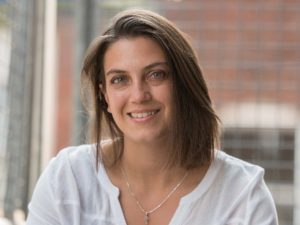
Katherine Mitchell
Registered Architect and LEED Coordinator
Get our newsletter with insights, events and tips.
Recent Posts:
Mentor’s CARES House: Autistic Education Comes Home
Perry High School Unveils a State-of-the-Art Welding Lab
ThenDesign Architecture Celebrated its 35th Anniversary
Capital Improvement Plans Work

Katherine Mitchell
Katherine Mitchell is a registered architect, and LEED Accredited Professional with a Building Design and Construction specialty at TDA. She sees the value of environmentally sustainable design in modern educational spaces. Katherine became fascinated with buildings and construction from an early age. Her passion for design and environmental sustainability led her to architecture.
